You’ve probably noticed it before—long-term couples weirdly start to resemble each other, even if they look nothing alike at their core.

They suddenly have the same facial expressions, the same energy, and sometimes even the same haircut. At first glance, it seems weird, but when you look closer, there’s real psychology, subtle behaviours, and shared habits behind it. No, they weren’t separated at birth. But after years of syncing up emotionally, mentally, and physically, it turns out some resemblance is almost inevitable. Here are some of the reasons why couples start mirroring each other in more ways than one.
1. They mirror each other’s expressions all the time.

Humans naturally mimic the people we spend time with. When couples laugh together, empathise, or share everyday moments, they unconsciously adopt each other’s micro-expressions in the long run. Their daily facial syncing can subtly shape how their features sit. The more shared smiles, frowns, and eye crinkles—especially over years—the more their faces start to echo one another’s mood and tone.
2. The habits they have in common influence their appearance.
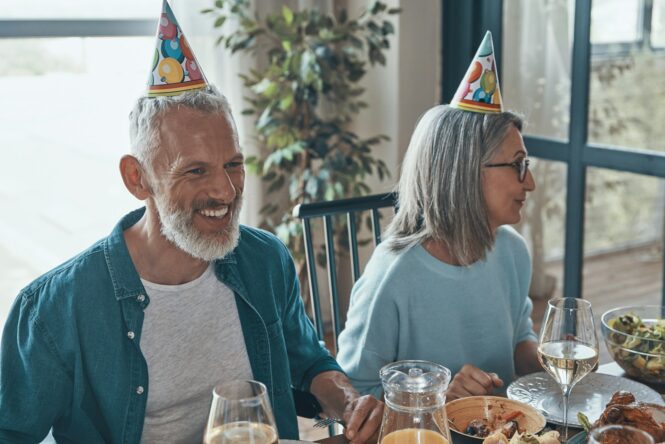
If you eat similar food, follow the same sleep schedule, and share daily routines, your bodies tend to respond in similar ways. Your lifestyle literally starts shaping your features and energy. From stress levels to skincare habits, couples often develop patterns that either enhance or age them in similar directions, sometimes without even realising it’s happening.
3. They copy each other’s body language long-term.

Sitting posture, walking style, even hand gestures—these all slowly sync up in long-term relationships. It’s not something people usually notice right away, but the body starts mirroring what feels familiar. Their shared rhythm creates a visual harmony. You might walk in step, lean the same way, or cross your arms identically, all of which makes you look more alike in motion.
4. They dress alike without planning to.

No one’s necessarily buying matching outfits, but after a while, many couples start gravitating toward similar aesthetics. Maybe it’s the same colour palette, similar shoes, or a general “vibe” that aligns. This isn’t copying; it’s comfort. You both develop a sense of what looks and feels good in similar environments, and that starts showing up in your wardrobes without much discussion.
5. Emotional syncing affects physical expression.
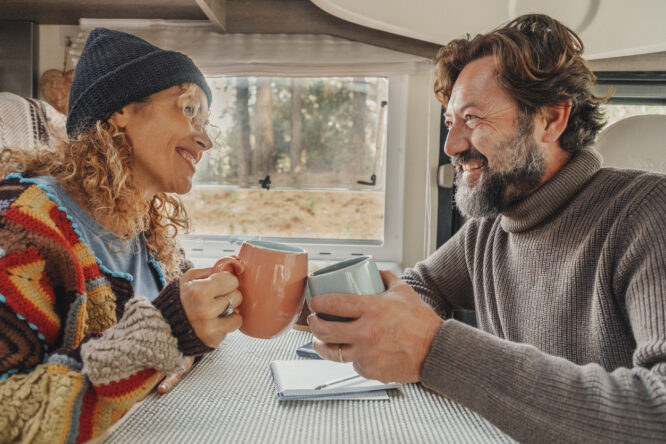
If your partner’s stressed, you feel it. If they’re joyful, you absorb it. The constant emotional mirroring eventually shows up in your resting face and overall energy. Couples who spend years supporting and reacting to each other emotionally start reflecting that intensity physically. Shared worry can lead to similar tension patterns; shared joy to matching smile lines.
6. They copy each other’s vocal tone and rhythm.

You might not realise it, but voice is another place where mimicry creeps in. Long-term couples often develop a shared tone, pace, and even inflection patterns when they speak. It’s part connection, part empathy. We naturally lean into the way someone talks to feel closer, and after years, that rhythm starts shaping how we’re seen, too.
7. Time together changes their baseline mood.
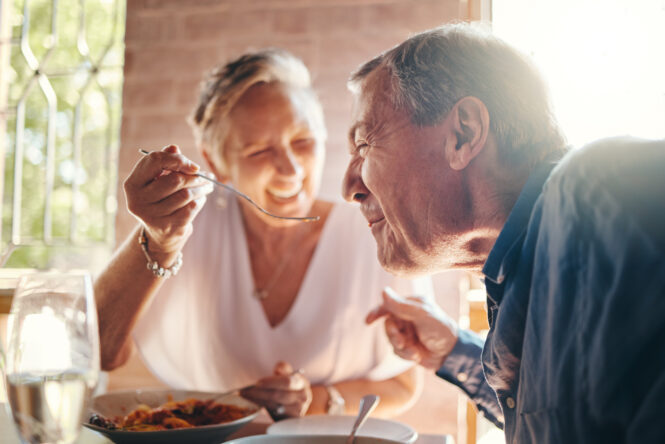
If your relationship is happy and steady, your overall emotional baseline improves. That shows up in your posture, energy, and how relaxed your face is, even when you’re alone.When both people are thriving emotionally, their faces soften, their eyes brighten, and their vibe becomes more aligned. The result is a kind of quiet resemblance born out of shared contentment.
8. Similar environments shape physical habits.
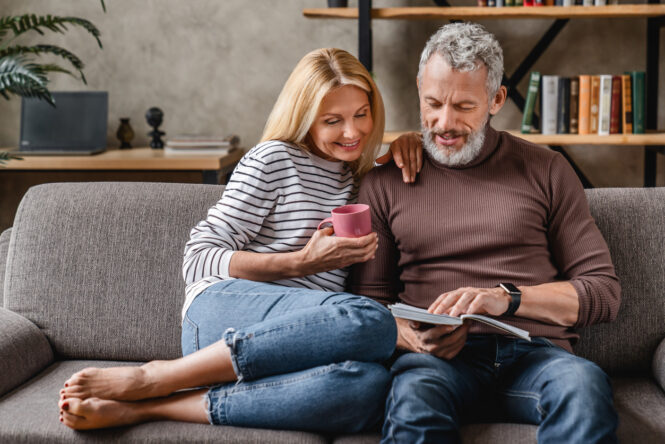
Where you live, what you eat, how active you are—it all plays a role in how you age. Couples often develop similar rhythms around movement, weather tolerance, and routines. Two people hiking every weekend will develop different muscles and energy than two who spend evenings curled up watching shows. Environment leaves its mark, and often makes couples age in parallel ways.
9. They pick up grooming and skincare habits from each other.

As time goes on, partners influence each other’s approach to self-care. If one starts moisturising regularly or trying a new product, the other might follow suit—sometimes out of curiosity, sometimes out of pure convenience. Those small grooming changes can quietly level out differences. If both are suddenly into SPF and sleep masks, it’s not surprising that their glow (or dryness) starts matching too.
10. They influence each other’s facial muscles.

This one’s subtle but fascinating. Repeated shared expressions actually train the muscles in the face to develop in similar ways. The shape of your smile or frown lines can shift slightly over years of shared emotion. Think of it like muscle memory—but emotional. If you’re constantly making the same expressions together, your faces quietly start telling the same story.
11. They mimic stress patterns and coping behaviours.

If one partner clenches their jaw when anxious, the other might start doing the same. If one tends to squint or raise their eyebrows a lot, it can rub off, especially when that’s the face you see most often. These aren’t dramatic changes, but over years, they shape expression and tension in similar ways. You literally “wear” each other’s stress and response patterns over time.
12. They influence each other’s health (for better or worse).

Diet, sleep, exercise, alcohol, sun exposure—couples influence each other’s health choices constantly. Whether it’s takeaways or green smoothies, one partner’s habits often rub off on the other’s. Their shared approach to wellbeing means they end up ageing in sync. You can sometimes spot couples who eat the same, move the same, and rest the same because their faces and bodies reflect it.
13. They become each other’s mirror.
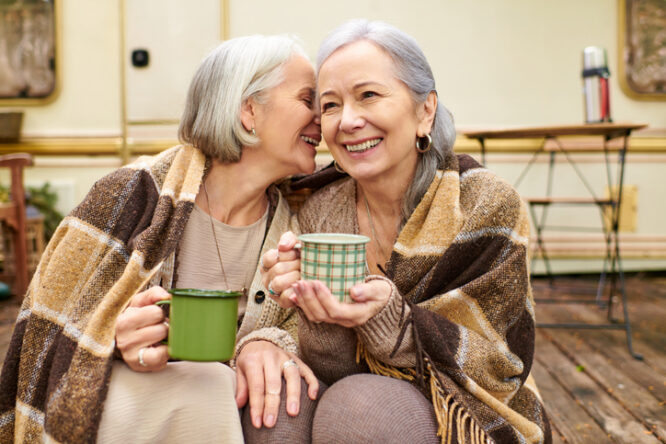
When someone sees you every day, their reactions start to shape how you see yourself. Their expressions when you speak, smile, or feel something emotional bounce back at you—and you adjust without realising it. That constant mirroring doesn’t just strengthen emotional intimacy. It subtly shapes your own expression and identity to align more closely with theirs. It’s a feedback loop that literally softens and reshapes how you show up.
14. Long-term love smooths out the differences.
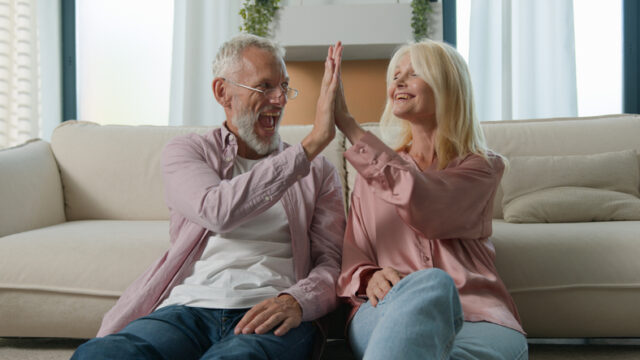
After years together, what once seemed like clashing styles or expressions often starts to blend. Shared humour, memories, and daily rituals naturally reduce friction, and increase visual harmony. You don’t become carbon copies of each other, but the edges soften. You grow in the same direction. Eventually, people start to say, “You two look alike”—not because of biology, but because of closeness that shows on your face.




